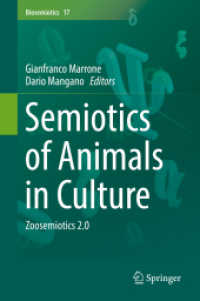- ホーム
- > 洋書
- > 英文書
- > Business / Economics
基本説明
Seminal contributions to the field have been brought together with a unique commentary.
Full Description
In the past decade, complexity-based thinking has exerted an increasing, yet somewhat controversial authority over management theory and practice. This has in some part been due to the influence of a number of high-profile articles and the not inconsiderable hype which has accompanied them. Another feature of the subject's development has been the diversity of the origins of the thinking and the claims which have been made for it in terms of managerial and organizational implications. Complexity and Organization is the first text to bring this thinking together, presenting some of the most influential writing in the field, showing how the subject has developed and how it continues to influence managerial thinking.
Seminal contributions to the field have been brought together in a single accessible volume, allowing readers to access what might otherwise appear a very diverse body of literature. Moreover, the editors, who represent some of the leading thinkers and writers in this field, have combined these readings with a unique commentary, indicating not only the importance of the papers but teasing out the subtle but significant differences and similarities between them. These commentaries take the form of a discussion between the editors, debating the contribution that each paper has made to the field and the influence it has had on management thinking.
Contents
Introduction Section 1: Chaos Theory and Dissipative Structures 1. Chaos Theory and Strategy 2. Conditioned Emergence 3. Surfing the Edge of Chaos 5. The Science of Complexity 6. Leadership and the New Sciences Editors' Discussion of the Papers in Section 1 Section 2: Categorizing Complexity 7. Evolving Complexity in Social Science 8. Speaking of Complexity in Management Theory and Practice 9. Emergence Editors' Discussion of the Papers in Section 2 Section 3: Complexity in Social Settings 10. From Complexity Science to Complex Thinking 11. Learning as the Activity of Interdependent People 12. Complex Thinking Editors' Discussion of the Papers in Section 3. Concluding Remarks








